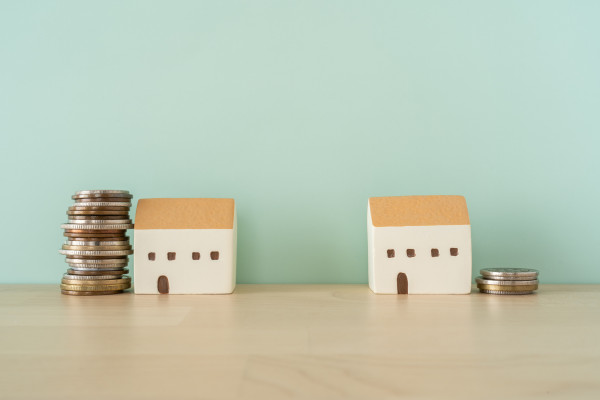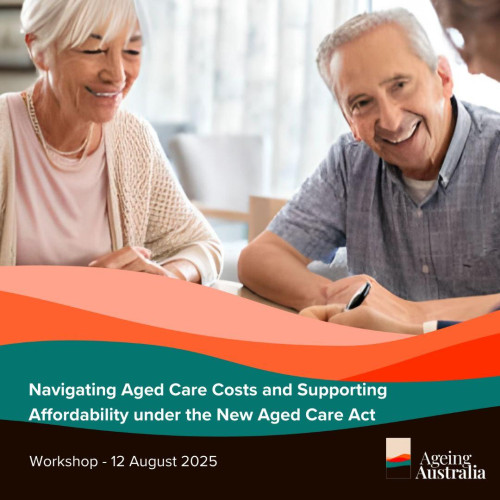Accommodation Pricing for Future Sustainability

The Cost of Standing Still
Accommodation services remain a leading source of financial loss in residential aged care.
According to StewartBrown’s March 2025 Survey, the average loss is $10.95 per resident per day – around $4,000 annually, or nearly $400,000 for a 100-bed facility. This accounts for 21% of the average provider’s EBITDA deficit and 24% of accommodation revenue.
Despite these losses, RAD pricing has remained static – typically between $450,000 -$500,000 – well below what’s needed to fund refurbishments or new builds. Over the same period, Australia’s median home value has increased by $230,000 (39.1%) according to CoreLogic. Why have RADs failed to keep pace?
With construction inflation outstripping RAD growth, minimal government co-contribution to capital works, and growing reliance on RAD reserves, providers are exposed to serious financial risk. Operations are only financially sustainable when RAD pricing is aligned with capital cost realities.
Governance Shift: From Passive to Proactive
Accommodation pricing is no longer a background task; it’s a core governance function. Historically, pricing was often:
- Set at opening
- Reviewed infrequently
- Considered outside management control
- Treated as a non-strategic revenue stream
That approach might have sufficed when care funding could cross-subsidized losses. But with reforms removing that buffer, providers must now view accommodation pricing as a critical lever for financial sustainability.
Regulatory shifts reinforce this need:
- 2% RAD retention
- DAP indexation
- RAD limit lifted to $750,000
- Clear financial separation between care and accommodation
We anticipate that many providers will peg their RAD to $750,000 and continue this ad hoc approach of setting their accommodation price with reference to this limit. While this may help in the short term, it falls short of a strategic approach to accommodation pricing and return.
For providers wanting to set their RAD above $750,000, IHACPA applies a rigorous test, focusing on fairness, capital adequacy, and sustainability. Without evidence-based pricing, higher RADs are unlikely to be approved.
Resident Expectations are Rising
Residents, or their families, increasingly expect larger rooms, private ensuites, and lifestyle-enhancing spaces. Yet many providers still offer flat pricing across rooms that are materially different in size, finish and features. This misalignment not only leaves revenue on the table but also weakens the value proposition.
To stay competitive and sustainable, pricing must reflect room quality and market expectations, not just competitor rates or historical norms. Failure to align pricing with value results in either future residents paying more or facilities becoming substandard.
Case Study
We recently worked with a provider whose RADs hadn’t shifted in years, despite a 70% rise in local housing prices. They held significant RAD reserves, earning modest returns and weren’t confident discussing DAP vs. RAD with incoming residents.
We discussed how underpricing was limiting their capital flexibility, and how excess RADs with no foreseeable use were creating refund exposure while delivering only modest returns. We introduced the idea of treating forgone DAP as an operational cost, rather than simply treating RAD investment as non-operational income. This better reflects the economic cost of holding unused RAD. This helped the client shift their thinking toward a more strategic pricing approach aligned with capital needs and risk.
Set the Rules Before You Set the Price
To support better financial governance, providers should establish a structured Accommodation Pricing Policy that outlines:
- How you will set accommodation prices
- How often you review them, and what triggers a change
- What return you seek on accommodation and invested RAD
- How RAD and DAP income are attributed across operations and investments
- Who has the authority to make pricing decisions
How much capital do you need?
Understanding your capital needs is also critical. This includes assessing how much RAD you currently hold in excess of your liquidity and future refurbishment requirements. Quantifying this “excess RAD” reveals its economic cost - and helps guide more sustainable pricing.
Communication is essential
Lastly, adopt a communication plan to help prospective residents understand and appreciate their options, including the benefits of DAP or combination payments - not just offering the headline RAD figure. These conversations are essential to unlocking fairer and more flexible pricing outcomes.
A Three-Factor Model for Smarter Pricing
At Pride Aged Living, we use a three-factor model to help providers align pricing with market, consumer and financial realities.
We use a three-factor model to help providers align pricing with market, consumer, and financial realities:
- Consumer Value
Pricing reflects tangible room differences—size, ensuite access, finish, shared vs. private spaces, and lifestyle offerings—rather than matching competitor averages.
- Market Positioning
While RADs don’t track house prices directly, they should relate to local affordability. We use nuanced comparisons—not median home values—to position pricing with credibility and fairness.
- Financial Return
Accommodation should generate a sustainable return. With the long-term MPIR around 7.5%, underperforming RAD reserves represent a lost opportunity. Unless providers earn that benchmark, they're weakening their operational base.
This model also supports stronger applications to IHACPA for RADs above $750,000, as it demonstrates pricing fairness, sustainability, and consumer alignment.
Why this Matters
RADs fund over 60% of capital expenditure in the sector (StewartBrown, Mar 2025). Underpricing reduces profitability and limits renewal capacity. Holding excess RAD reduces financial performance. Both raise governance flags.
Mistakes in pricing policy today will show up in an inability to refurbish tomorrow.
Need Support?
If you're ready to move from reactive pricing to a structured, evidence-based approach, we can help.
Explore our Accommodation Optimisation Services for hands-on support in pricing policy design, RAD strategy, and IHACPA applications.
See our Accommodation Optimisation Services
Join our upcoming webinar in collaboration with Ageing Australia, happening on 12 August.

To find out how we can assist your organisation with accommodation outcome, contact George.
George Suharev
02 9068 0777
george.suharev@prideagedliving.com.au

